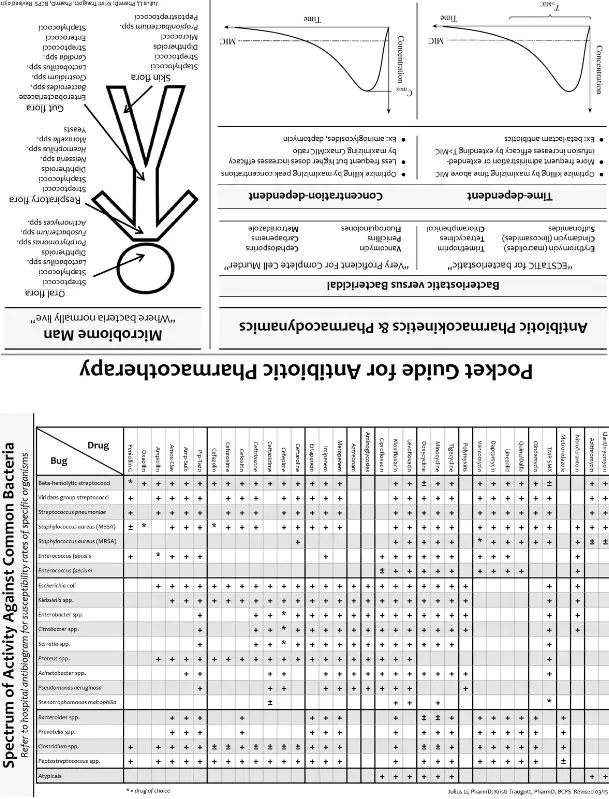‘Antibiotics List’ PDF Quick download link is given at the bottom of this article. You can see the PDF demo, size of the PDF, page numbers, and direct download Free PDF of ‘Antibiotics List’ using the download button.
Antibiotics List PDF Free Download

Antibiotics List
Diseases and infections are caused due to several organisms such as bacteria, viruses, fungi, etc. in both humans and animals.
The drug which is used in the prevention of the pathogenicity of these microorganisms is known as an antimicrobial agent.
Antibiotics are known substances that are derived from an organism for killing another organism. These are effective against all kinds of infections including bacterial, parasitic, and fungal. However, antibiotics are not very effective against viral infections.
The chemical synthesis development has significantly helped in producing synthetic components that tend to act as antimicrobial agents and attack pathogenic bacteria.
All these synthetic components are known as antibiotics. They tend to kill the pathogenic bacteria at lower concentrations. Examples of these antibiotics are amoxicillin and ampicillin.
(the image will be uploaded soon)
Types of Antibiotics
In the year 1908, a German bacteriologist named Paul Ehrlich created a synthetic component from an arsenic-based structure to treat syphilis, called salvarsan or arsphenamine.
Later, in the year 1929, Alexander Fleming discovered Penicillin from a fungus called Penicillium notatum. Penicillin has been used ever since then in the treatment of several different kinds of bacterial infections.
There are two different kinds of antibiotics that are commonly available. They are given below:
- Bactericidal Antibiotics: These types of antibiotics have a highly killing effect on the bacteria. Examples of these antibiotics are Penicillin, Ofloxacin, and Aminoglycosides.
- Bacteriostatic Antibiotics: These are the types of antibiotics that have an inhibitory effect on the bacteria. Examples of these antibiotics include Tetracycline, Erythromycin, and Chloramphenicol.
Depending upon the action spectrum, antibiotics are even further divided into three different types. These are given as follows:
- Broad-Spectrum Antibiotics: These are the kind of antibiotics that are widely used in killing or inhibiting the effect of both Gram-positive bacteria and Gram-negative bacteria. Example: Chloramphenicol.
- Narrow-spectrum antibiotics: These are the types of antibiotics that are highly effective against certain kinds of bacteria. Example: Penicillin G.
- Limited spectrum antibiotics: These antibiotics are highly effective against one particular organism or one single disease. Example: Dysidazirine.
Antiseptics and Disinfectants
Antiseptics and disinfectants refer to the chemical components that are used in the form of antimicrobial agents.
Antiseptics have to be applied to any kind of injured tissues, infected skin surfaces, and cuts. Antiseptics, however, are not supposed to be taken orally through the mouth.
Antiseptics can be of different kinds including antibiotic cream, antibacterial cream, or antibiotics for boils. Given below are a few examples of antiseptics.
- Dettol: Dettol is a mixture of terpineol and chloroxylenol. It is used on the areas of wounds.
- Iodine Tincture and Iodoform: It is known to have good antiseptic properties.
- Boric Acid: It is effective as an antiseptic agent to the eyes.
Disinfectants are used in destroying the pathogenic microorganisms that are present in non-living objects, for example, drainage systems, floors, furniture, etc.
Examples: sulfur dioxide and chlorine at lower concentrations.
Antimicrobial Agents Uses
The usage of antimicrobial agents in the form of highly specific inhibitors has helped in the investigation of complicated biochemical processes.
There have been different forms of antimicrobials that have been in use for several decades. However, more customers have started to become aware of several antimicrobial treatments available for floor coverings in the past forty years or so.
Several different forms of antimicrobials that are marketed to the different carpet industries by many different firms have been regarded to contain fungi and bacteria.
If we look from a scientific point of view, these carpet systems tend to use easy chemical compositions.
These include organo-silanes and organometallics. Both these compounds can also be paired with each other.
List of Antibiotics
Typically, antibiotics are the medications that help in stopping the infections that are caused by bacteria. They tend to work in two different ways.
They help in killing the bad bacteria that cause infections and preventing the bacteria from reproducing even more harmful bacteria.
There are more than 100 different types of antibiotics, but there are only ten antibiotics that are most commonly in use.
These are:
- Amoxicillin
- Amoxicillin/Clavulanate
- Azithromycin
- Cephalexin
- Clindamycin
- Ciprofloxacin
- Metronidazole
- Sulfamethoxazole/Trimethoprim
- Levofloxacin
- Doxycycline
Every kind of antibiotic is effective only for a certain type of bacterial infection, for example, a urinary tract infection or a strep throat.
When a person is prescribed an antibiotic, it is meant to treat a specific line of germs that cause the infection. They are, however, not effective in treating viral infections such as flu or cold.
| Language | English |
| No. of Pages | 2 |
| PDF Size | 0.03 MB |
| Category | Health |
| Source/Credits | www.universityhealth.com |
Related PDFs
Rajiv Swagruha Bandlaguda Allotment List PDF
Linked List In Data Structure PDF
Antibiotics List PDF Free Download
